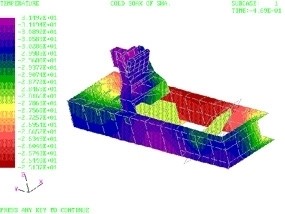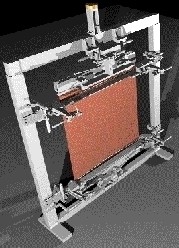Dear Colleagues:
Let me return to the subject of thermal problems in optical systems. I mentioned that I often “linearize” the radiation heat transfer problem. That appeared to confuse some of you so let me explain my position.
I have found that the stability and precision of linear heat transfer solutions uniquely support the precision demanded by high-performance optical instruments. This is especially true during the design phase when mechanical features need to be traded against each other on the basis of their support for the optical image’s quality and stability requirements. My experience has been that this technique captures the physics of the optomechanical problem better than the alternatives.


That was true for the example I gave, the LACE
spacecraft’s UVPI instrument (above), that made the cover of Aviation Week’s
75th anniversary issue. The optical sensor head and both electronics
assemblies (a power supply and the signal processor) were modeled in a linear
heat transfer code.
I kick around this issue (and a number of others) in my class,
“Optomechanical Analysis.” I’ve agreed to present the class in
Baltimore on May 2nd at SPIE’s Defense Security + Sensing Symposium. If
you missed it in San Francisco here’s another opportunity:
http://spie.org/app/program/index.cfm?fuseaction=COURSE&export_id=x12502&ID=x6771&redir=x6771.xml&course_id=E2019181&event_id=1042005&programtrack_id=634
Spring is here! Can you believe it?
Al H.
3-19-13











